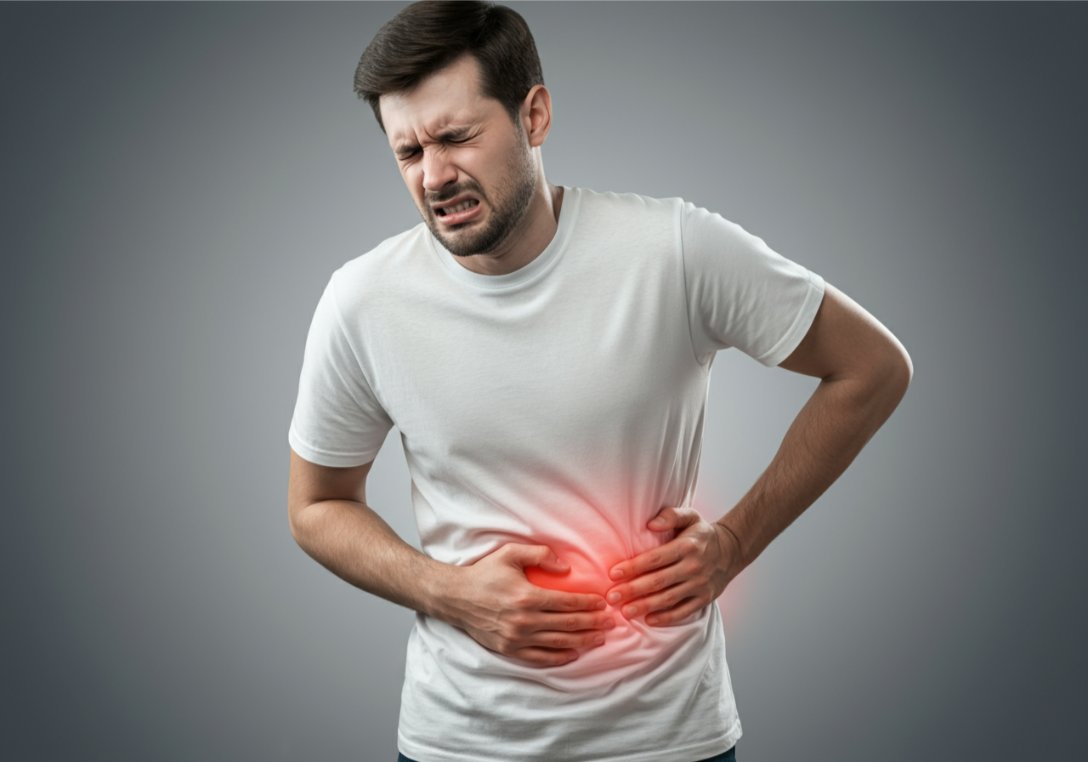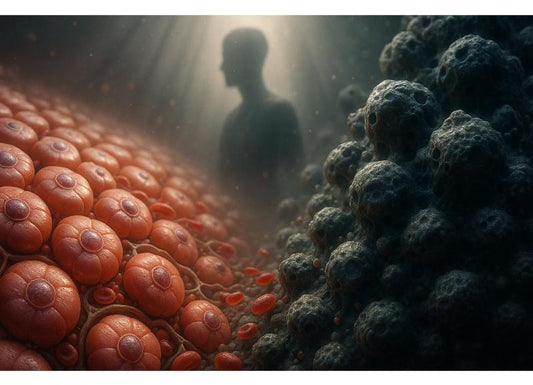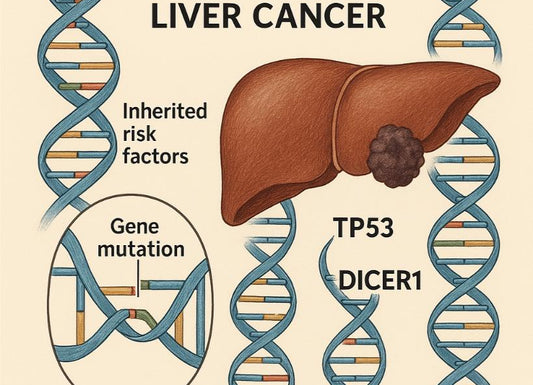Why Does My Liver Hurt?
 Written By
Abel Tamirat, MD
Written By
Abel Tamirat, MD

If you’re feeling pain or discomfort on the right side of your upper abdomen, you might wonder if it’s your liver. Because the liver is a large organ located under your right rib cage, it can sometimes cause a dull ache or sharp pain when something is wrong.
Liver pain can range from mild discomfort to severe tenderness — but it’s important to know that the liver itself doesn’t have many pain nerves. Most of the discomfort comes from the stretching of the tissue around it (called the capsule) or from nearby inflammation.
This article explains what liver pain feels like, common causes, when to seek medical help, and how to protect your liver health.
What Liver Pain Feels Like
People often describe liver pain as:
-
A dull ache or pressure under the right ribs.
-
Discomfort that worsens after eating fatty foods or drinking alcohol.
-
Pain that radiates to the right shoulder or back.
-
Tenderness when pressing on the upper right abdomen.
Sometimes, the pain may feel more like fullness, bloating, or tightness rather than a sharp sensation. In some cases, you might not feel liver pain directly — instead, you may experience fatigue, nausea, or other symptoms linked to liver problems.
If you suspect your pain might be linked to fatty liver or early liver damage, our guide to at-home liver tests explains how to monitor enzyme levels safely from home.
Common Causes of Liver Pain

Many conditions can cause the liver or surrounding areas to feel sore. Here are the most common:
1. Fatty Liver Disease
Fatty liver, also called hepatic steatosis, happens when too much fat builds up in the liver cells. It’s one of the leading causes of liver discomfort today.
There are two main types:
-
Nonalcoholic fatty liver disease (NAFLD): Linked to obesity, diabetes, or high cholesterol.
-
Alcohol-related fatty liver: Caused by excessive drinking.
In both cases, you might feel a dull pain or heaviness under the right ribs. The good news is that fatty liver is often reversible with lifestyle changes like healthy eating and avoiding alcohol.
2. Hepatitis (Liver Inflammation)
Viral infections such as hepatitis A, B, or C can inflame the liver, causing swelling and discomfort.
Symptoms may include:
-
Tenderness in the upper right abdomen.
-
Fatigue and weakness.
-
Nausea or vomiting.
-
Yellowing of the skin or eyes (jaundice).
If you suspect hepatitis or have been exposed to someone with the virus, seek medical care promptly — early treatment can prevent complications.
3. Alcohol-Related Liver Disease
Regular or heavy alcohol use can damage liver cells, leading to inflammation (alcoholic hepatitis) and scarring (cirrhosis). Over time, this can cause persistent liver pain.
Even moderate drinking may worsen existing liver problems. Quitting alcohol and getting proper treatment can often stop further damage and relieve symptoms.
4. Liver Infection or Abscess
A liver abscess is a pocket of pus caused by bacterial or parasitic infection. It’s a serious condition that can cause sharp pain, fever, and chills.
If you experience sudden severe pain with fever or nausea, seek medical attention immediately.
5. Gallbladder or Bile Duct Issues
Because the liver, gallbladder, and bile ducts work closely together, pain in one organ can feel like pain in another. Gallstones or bile duct blockages often cause right-sided pain that worsens after meals — especially fatty ones.
The discomfort can be intense and may radiate to the shoulder or back.
6. Liver Cirrhosis
Cirrhosis occurs when long-term liver damage leads to scarring. The liver becomes hard and nodular, which can stretch its capsule and cause dull, aching pain.
Other symptoms of cirrhosis include:
-
Swelling in the abdomen (ascites).
-
Easy bruising or bleeding.
-
Yellowing of the eyes or skin.
-
Fatigue and confusion.
While cirrhosis is not reversible, abstaining from alcohol, managing underlying conditions, and taking prescribed medications can help slow its progression.
7. Liver Cancer or Metastatic Tumors
In rare cases, liver pain may signal cancer that started in the liver or spread from another organ. Symptoms often develop gradually and may include:
-
Persistent upper abdominal pain.
-
Unexplained weight loss.
-
Fatigue and loss of appetite.
-
Jaundice.
If your pain persists or worsens, your doctor may order imaging tests like an ultrasound or MRI to investigate further.
8. Congestive Heart Failure or Other Conditions
Sometimes, liver pain is due to blood backing up into the liver when the heart isn’t pumping efficiently. This is called congestive hepatopathy and often occurs in people with heart failure.
Pain from other organs, like the intestines or diaphragm, can also be mistaken for liver pain.
Because the liver and kidneys work closely to filter toxins, you may also want to check your renal health using our at-home kidney function test guide.
Other Symptoms That Can Accompany Liver Pain
Because the liver is involved in many body functions, liver pain may come with other warning signs, such as:
-
Nausea or vomiting.
-
Loss of appetite.
-
Yellowing of skin or eyes (jaundice).
-
Itchy skin.
-
Dark urine or pale stools.
-
Swelling in the legs or abdomen.
-
Fatigue or confusion.
If you notice any combination of these symptoms, it’s important to contact your healthcare provider.
How Doctors Diagnose Liver Pain

Your doctor will start by asking about your symptoms, medical history, and lifestyle habits, such as alcohol use or medication intake. Then, they may order one or more of the following tests:
-
Physical exam: To check for tenderness, swelling, or an enlarged liver.
-
Blood tests: To evaluate liver enzymes (ALT, AST, ALP, bilirubin) and detect inflammation or damage.
-
Ultrasound: To visualize the liver’s size, shape, and texture.
-
CT or MRI scan: To look for tumors, cysts, or abscesses.
-
Liver biopsy: To assess the type and severity of liver disease.
These tests help identify whether the pain truly originates from the liver or from nearby organs like the gallbladder or intestines.
If your doctor mentions hepatitis as a possible cause, our hepatitis B transmission guide breaks down how the virus spreads and how to stay protected.
When to See a Doctor
Mild discomfort may come and go, but you should contact a doctor if you experience:
-
Persistent pain lasting more than a few days.
-
Severe or sharp pain under the right ribs.
-
Nausea, vomiting, or loss of appetite.
-
Yellowing of the skin or eyes.
-
Fever or chills.
-
Swelling in the abdomen or legs.
These symptoms may signal liver inflammation, infection, or other conditions that need prompt care.
Seek emergency care if your pain is intense, sudden, or accompanied by confusion, vomiting blood, or dark tarry stools.
How to Protect and Support Your Liver

Even if your pain is mild, taking steps to support liver health can prevent long-term damage.
-
Avoid alcohol: Alcohol is one of the biggest causes of liver inflammation and scarring.
-
Maintain a healthy weight: Fatty liver is strongly linked to obesity and poor diet.
-
Eat a balanced diet: Focus on fruits, vegetables, lean proteins, and whole grains. Limit processed foods and added sugars.
-
Exercise regularly: Physical activity helps reduce fat in the liver and improves circulation.
-
Avoid unnecessary medications and supplements: Some over-the-counter pain relievers and herbal products can strain the liver. Always check with your doctor.
-
Stay hydrated: Water helps the liver filter toxins more efficiently.
-
Get vaccinated: The hepatitis A and B vaccines can prevent viral infections that damage the liver.
Myths About Liver Pain
Myth 1: Liver pain always means serious disease.
Fact: Mild discomfort can come from temporary inflammation or dietary issues. Still, persistent pain should always be checked.
Myth 2: Liver pain can be treated with detox drinks or cleanses.
Fact: The liver naturally detoxifies the body. No supplement or juice can speed this up — and some may actually harm the liver.
Myth 3: You can’t feel liver pain.
Fact: While the liver itself has few pain receptors, the tissue surrounding it can cause noticeable discomfort when stretched or inflamed.
The Bottom Line
Liver pain is your body’s way of signaling that something may not be right — whether it’s fatty liver, hepatitis, gallbladder problems, or another condition.
Because the liver is central to your overall health, don’t ignore ongoing discomfort or right-sided abdominal pain. A simple blood test or ultrasound can often identify the cause early, allowing for effective treatment and prevention.
With proper care, nutrition, and regular checkups, most liver conditions can be managed or even reversed before they lead to permanent damage.
Want to check your liver health from home?
You can take an at-home liver enzyme and metabolic health test through Ribbon Checkup and get accurate results in days.
Related Resources
-
National Institute of Diabetes and Digestive and Kidney Diseases (NIDDK): Liver Function and Disease
References
-
Mayo Clinic. (2025). Liver Pain: Causes and Evaluation.
-
American Liver Foundation. (2024). Understanding Liver Disease Symptoms.
- NIH. (2024). Liver Health and Common Disorders.
-
Cleveland Clinic. (2025). Causes of Pain in the Upper Right Abdomen.

Dr. Abel Tamirat is a licensed General Practitioner and ECFMG-certified international medical graduate with over three years of experience supporting U.S.-based telehealth and primary care practices. As a freelance medical writer and Virtual Clinical Support Specialist, he blends frontline clinical expertise with a passion for health technology and evidence-based content. He is also a contributor to Continuing Medical Education (CME) programs.



